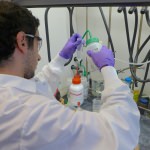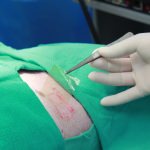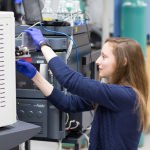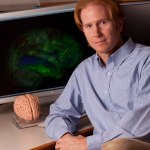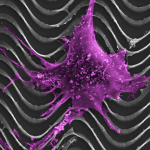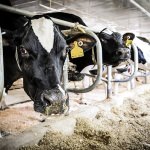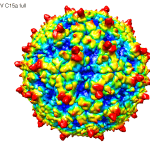Category Health & Wellness
A visual nudge can disrupt recall of what things look like
The connection between visual knowledge and visual perception challenges widely held theories that visual information about the world is stored abstractly.
Innovative program helps state residents living with diabetes
Healthy Living with Diabetes classes are offered throughout the state by the Wisconsin Institute for Healthy Aging with support from the UW–Madison Health Innovation Program. They help people manage their diabetes with practical advice delivered by trained leaders, many of whom have diabetes.
Study: Some women need more frequent mammograms
One size doesn’t fit all women in clothing, and neither should all women have mammograms on the same schedule, a new national study concludes.
Study to probe how concussion affects young athletes’ academic performance
Researchers from the School of Nursing and School of Medicine and Public Health are launching a pilot study aimed at teasing out the academic effects of concussions on younger athletes. “There is a substantial gap in our knowledge about what is going on with concussion at the high school level and younger,” explains researcher Traci Snedden.
Conference on child sexual abuse addresses growing problem of abusive images
MADISON — There’s a new threat to children called “sextortion,” a byproduct of the digital age. Child protection workers will learn to manage this growing problem at the University of Wisconsin–Madison’s Conference on Child Sexual Abuse, Oct. 31 through Nov. 2 at Madison Marriott West in Middleton, Wisconsin.
Children of Alzheimer’s Patients Can Be Valuable Resources for Scientists
Researchers are hoping to learn what causes Alzheimer’s and what treatments might be effective by studying people whose families have a history of the disease.
UW-Madison technology enlisted in battle against hepatitis B
A method that emerged from a UW–Madison spinoff company is in clinical trials in Europe, Asia and the United States against the infection, which can destroy the liver.
Mitochondrial maps reveal new connections to poorly understood diseases
Mitochondrial diseases strike about 1 in 4,000 people and there are currently no licensed therapies available beyond treatments with vitamins and supplements.
A panel of biomarkers may predict early Alzheimer’s disease
A new scientific approach may help predict which older adults are more likely to develop cognitive symptoms of Alzheimer’s disease well before the onset of dementia, says study author Sterling Johnson.
Wisconsin partnership program awards community improvement grants
MADISON – The Wisconsin Partnership Program at the University of Wisconsin School of Medicine and Public Health has awarded nine grants totaling more than $400,000 to organizations throughout Wisconsin.
Tiny 3-D models may yield big insights into ovarian cancer
With a unique approach that draws on 3-D printing technologies, a team of UW–Madison researchers is developing new tools for understanding how ovarian cancer develops in women.
Study: Working with others can help prevent Alzheimer’s
New research from the Wisconsin Registry for Alzheimer’s Prevention and the Wisconsin Alzheimer’s Disease Research Center shows that people whose jobs involve complex interactions with other people fare the best as their brains age. These include jobs that involve mentoring, negotiating or teaching.
Happy hormone’s calcium connection may make cows and humans healthier
Serotonin is best known for eliciting feelings of happiness in the human brain, but scientists at the University of Wisconsin–Madison have found the hormone plays a role in milk production in dairy cows — and may have health implications for breastfeeding women.
UW, Purdue scientists solve structure of cold virus linked to childhood asthma
The findings provide the foundation for future antiviral drug and vaccine development against rhinovirus C.








